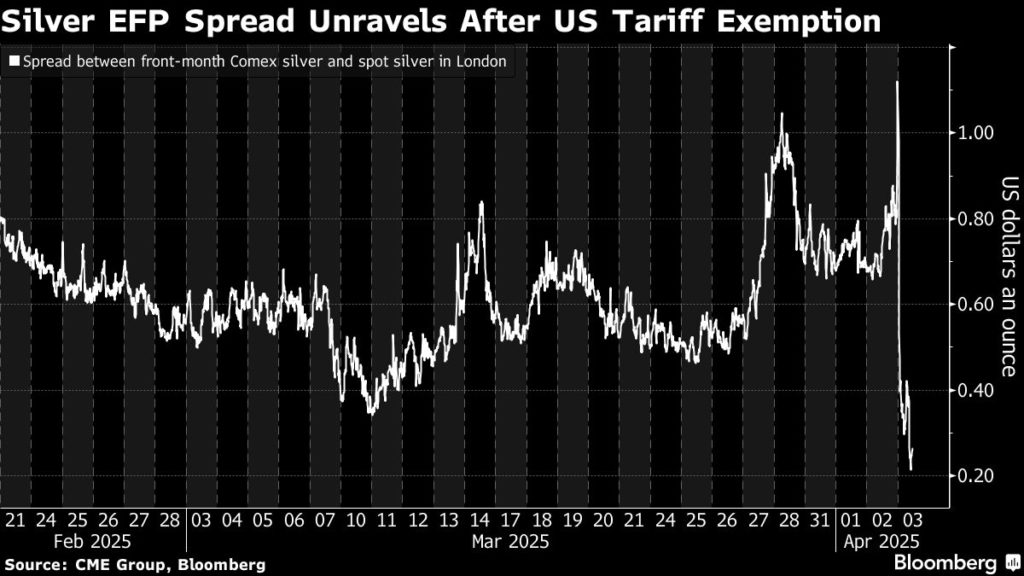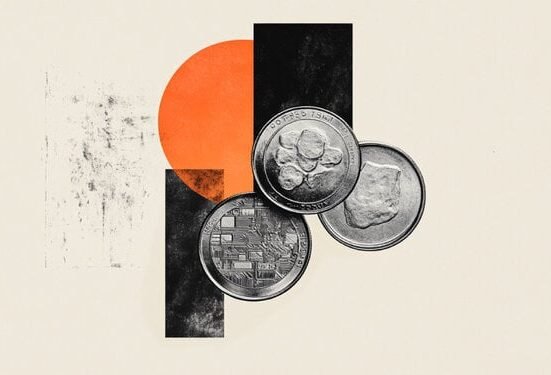A massive arbitrage trade that has drawn tens of billions of dollars’ worth of gold and silver to the US came to an abrupt halt with Wednesday’s announcement that precious metals would be exempt from Donald Trump’s sweeping tariffs.
For several months, prices in New York have traded at large and unusual premiums to global benchmarks as traders weighed the risk that precious metals could be caught up in tariffs. The differential created an incentive for banks and traders to load planes and ships with so much bullion that it distorted US trade data in the process.
On Thursday, US premiums for precious metals tumbled after a list of exemptions from the tariffs included gold, silver, platinum and palladium. The difference between front-month Comex gold and spot gold in London dropped to $21 an ounce, from over $62 on Wednesday. For silver, the differential — known by precious metals trader as the “exchange for physical” or EFP — tumbled from more than $1 an ounce to just 8 cents.
“Yesterday’s announcement effectively puts an end to the massive flow of precious metals into the US over the last few months as the EFPs collapse,” said Anant Jatia, chief investment officer at Greenland Investment Management, a hedge fund specializing in commodity arbitrage trading.

US precious metals markets never fully priced in major tariffs, but the mere risk of them being imposed caused traders to cover short positions in the US markets, driving a persistent differential. That, in turn, created an incentive to ship physical metal to the US.
US inventories of precious metals have surged to the highest levels on record, with gold stocks up 26.5 million ounces since the end of November and silver up 174.6 million ounces — inflows that are collectively worth over $80 billion at current prices.
Imports of gold helped drive the US trade deficit to a record in January, prompting economists to exclude the precious metal from their calculation.
In February, imports of gold to the US dropped slightly, but remained extremely elevated by historical standards, trade data showed on Thursday. Inflows are likely to have remained high in March, and some may continue in April thanks to trades that were booked when the arbitrage was still open.
(By Jack Farchy)







